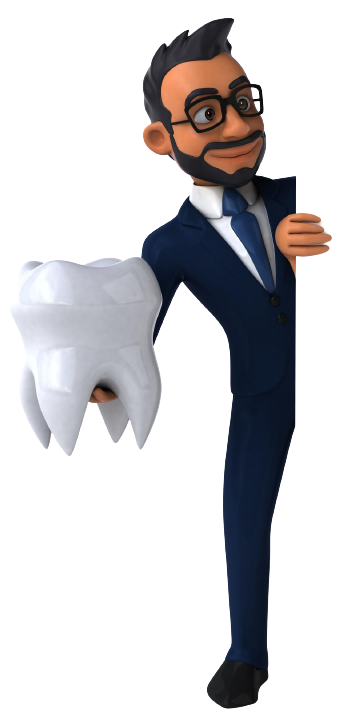The extraction procedure is typically performed by an oral surgeon or a dentist. It involves the administration of local anesthesia, sedation, or general anesthesia, depending on the complexity of the case and patient preferences. The surgeon will make an incision in the gum tissue to access the tooth and may need to remove a small portion of bone to extract it. In some cases, the tooth may be extracted in multiple pieces to ease the process. After the tooth is removed, the surgical site is often stitched up, and gauze is placed to control bleeding.
Recovery from wisdom tooth extraction may involve swelling, discomfort, and mild pain, which can be managed with pain medications prescribed by the dentist or oral surgeon. It is essential to follow post-operative instructions, including eating soft foods, maintaining oral hygiene, and avoiding certain activities to ensure proper healing. In most cases, the discomfort and swelling subside within a few days to a week.
It’s worth noting that not everyone needs to have their wisdom teeth removed. If the teeth are healthy, properly positioned, and not causing any issues, they may not require extraction. It is best to consult with a dental professional who can evaluate your specific situation and recommend the appropriate course of action.
Wisdom teeth may not have enough space to fully emerge or grow properly, causing them to become impacted. Impacted wisdom teeth can lead to pain, infection, and damage to adjacent teeth.
The eruption of wisdom teeth can cause overcrowding in the mouth, shifting the alignment of existing teeth and affecting the bite.
Wisdom teeth are located at the back of the mouth, making them harder to clean properly. As a result, they can be more prone to tooth decay and gum disease.
In some cases, wisdom teeth can develop cysts or tumors, which can lead to jaw pain, damage to surrounding teeth, and other complications.
One of the most common reasons for impacted wisdom teeth is a lack of space in the jaw. The human jaw has evolved over time, becoming smaller compared to our ancestors. As a result, there may not be enough room for the wisdom teeth to fully emerge or align properly with the existing teeth.
The position of the wisdom teeth can also play a role in impaction. If the teeth are angled or tilted in a way that obstructs their proper eruption path, they can become impacted.
Wisdom teeth typically erupt between the ages of 17 and 25, which is later than the other permanent teeth. By the time they start to emerge, the jaw may have already become fully occupied by existing teeth, leaving no space for the wisdom teeth to come in properly.
Sometimes, the wisdom teeth may be partially covered by gum tissue, referred to as a partial impaction. This can lead to the formation of a flap of gum tissue, which can easily become irritated, infected, or trap food particles, resulting in inflammation and pain.
During a dental examination, the dentist or oral surgeon will visually inspect your mouth and examine your teeth and gums. They will look for signs and symptoms that may indicate an impacted wisdom tooth, such as swelling, redness, tenderness, or difficulty in fully opening your mouth.
Dental X-rays, such as panoramic X-rays or periapical X-rays, are commonly used to assess the position and alignment of the wisdom teeth. These images provide a comprehensive view of your teeth and jaw, allowing the dentist to evaluate the presence and orientation of the wisdom teeth, as well as any signs of impaction or other associated issues.
In some cases, additional imaging techniques, such as cone beam computed tomography (CBCT), may be utilized. CBCT provides three-dimensional images of the teeth and jaw, offering more detailed information about the position, orientation, and proximity of the wisdom teeth to vital structures like nerves or sinuses.
: Before the extraction, the dentist or oral surgeon will administer a local anesthetic to numb the area around the tooth to be extracted. In some cases, sedation or general anesthesia may be used to ensure the patient’s comfort throughout the procedure.
Once the anesthesia has taken effect, the dentist or oral surgeon will make an incision in the gum tissue overlying the wisdom tooth. If necessary, they may also remove a small portion of bone that blocks access to the tooth.
The dentist or oral surgeon will then carefully loosen and remove the wisdom tooth from its socket in the jawbone. In some cases, the tooth may need to be divided into smaller sections to facilitate its extraction. Special dental instruments are used to ensure the tooth is safely and effectively removed.
After the tooth has been extracted, the dentist or oral surgeon may use dissolvable stitches to close the incision in the gum tissue. Gauze pads are typically placed over the extraction site to help control bleeding and promote the formation of a blood clot.
The patient will be given post-operative instructions to follow for proper healing. This may include guidelines on pain management, oral hygiene, diet, and activities to avoid. Pain medications and antibiotics may be prescribed, if necessary, to manage discomfort and prevent infection. Follow-up appointments may be scheduled to monitor the healing process.
